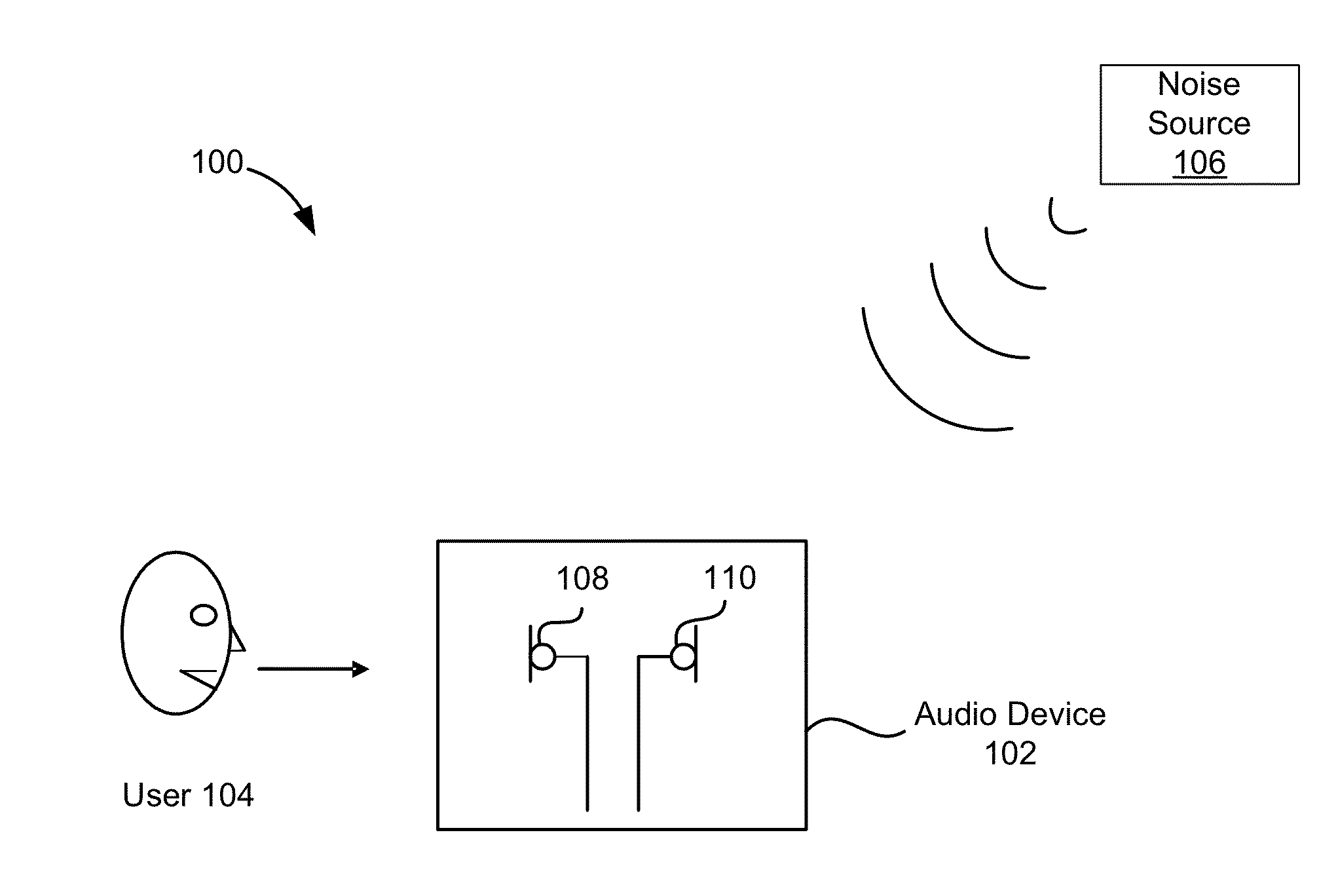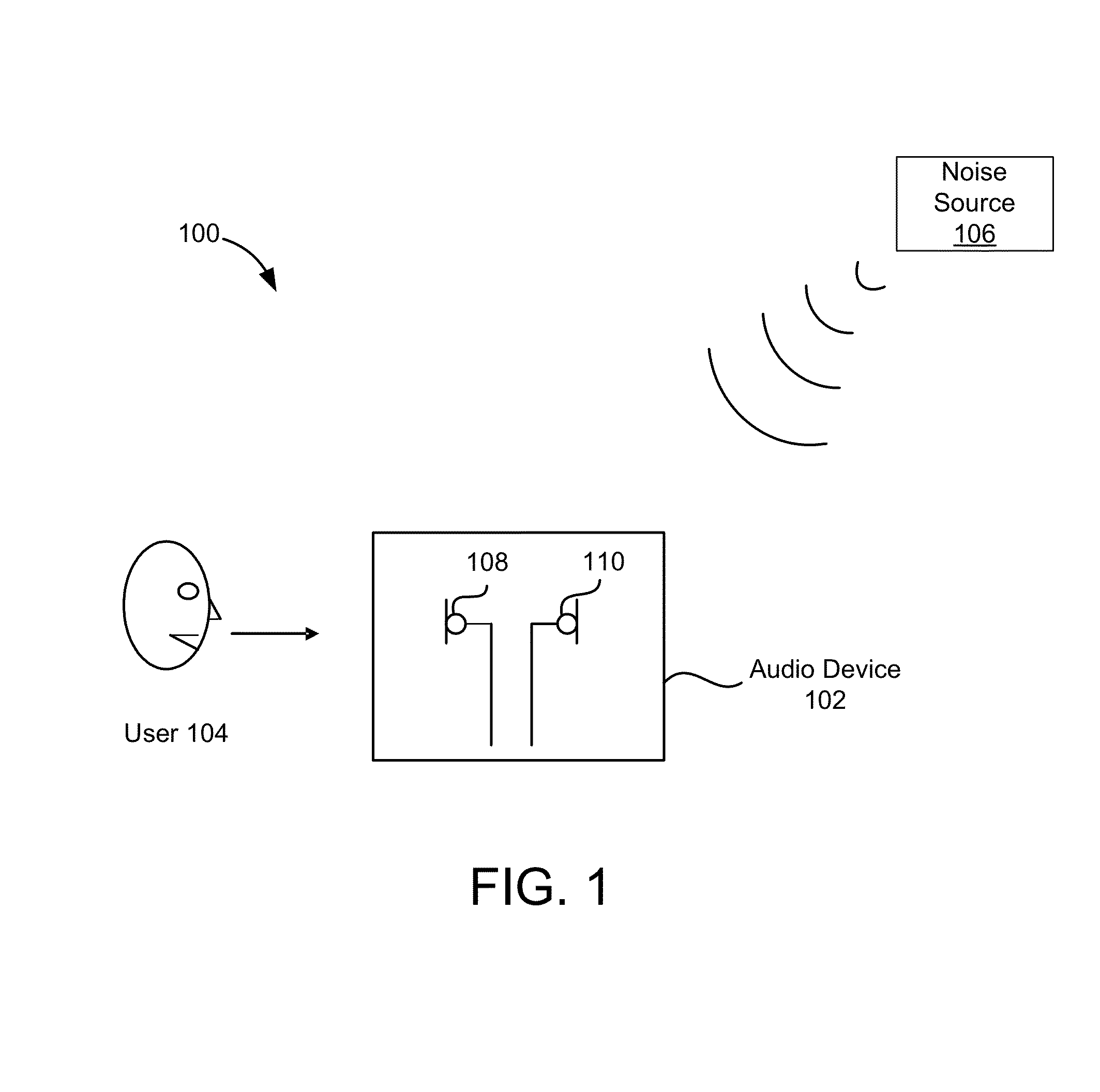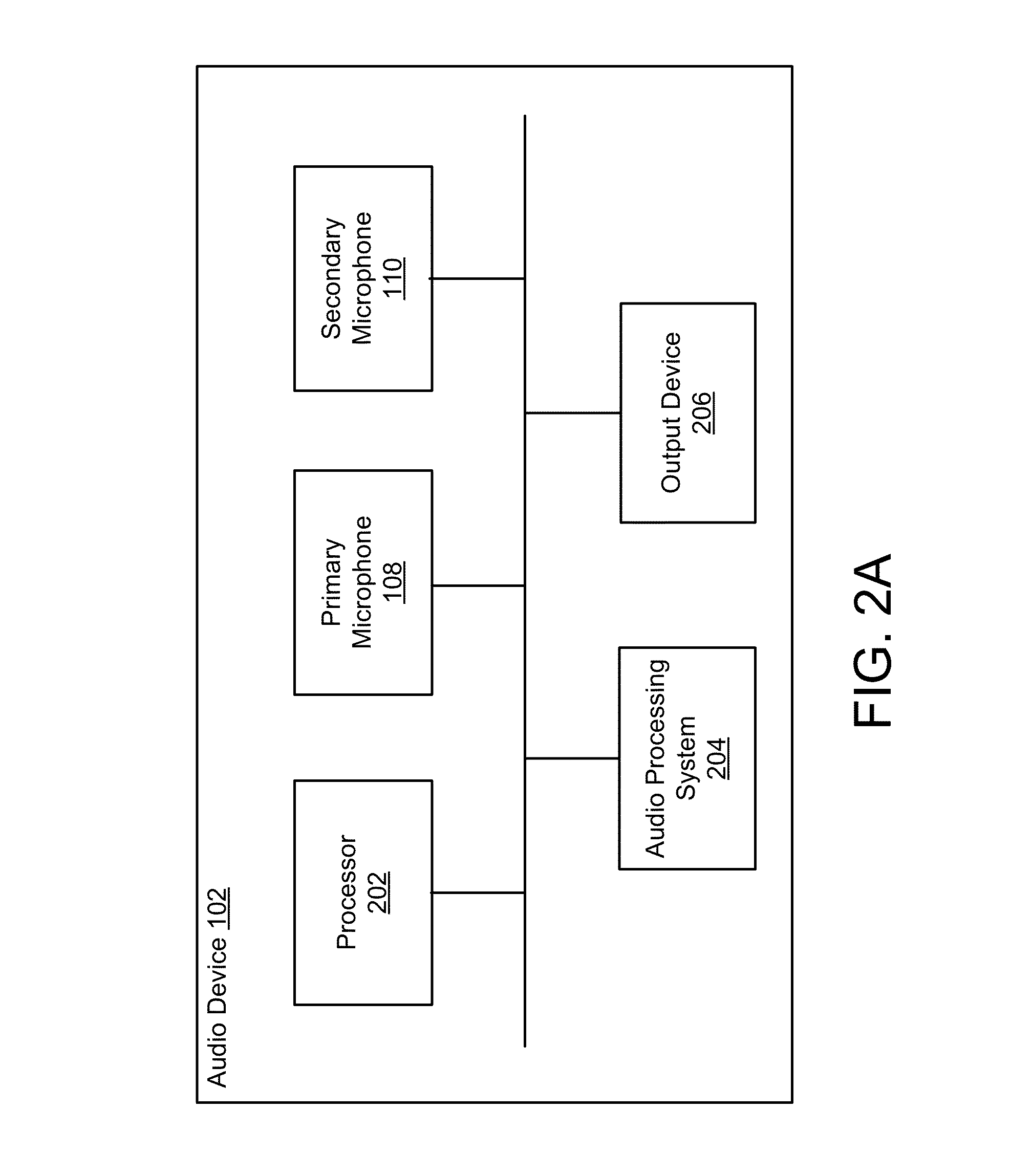Adaptive noise cancelation
a noise reduction and adaptivity technology, applied in the field of audio processing, can solve the problems of variations in microphone sensitivity, adverse effects on the robustness of a noise reduction system,
- Summary
- Abstract
- Description
- Claims
- Application Information
AI Technical Summary
Benefits of technology
Problems solved by technology
Method used
Image
Examples
Embodiment Construction
[0021]The present technology provides methods and systems for controlling adaptivity of noise cancelation of an audio signal. More specifically, these methods and systems allow noise cancelation to adapt to changing or unpredictable conditions. These conditions include differences in hardware resulting from manufacturing tolerances. Additionally, these conditions include unpredictable environmental factors such as changing relative positions of sources of wanted and unwanted audio signals.
[0022]Controlling adaptivity of noise cancelation can be performed by controlling how a noise component is canceled in an audio signal received from one of two microphones. All or most of a speech component can be removed from an audio signal received from one of two or more microphones, resulting in a noise reference signal or a residual audio signal. The resulting residual audio signal is then processed or modified and can be then subtracted from the original primary audio signal, thereby reducin...
PUM
 Login to View More
Login to View More Abstract
Description
Claims
Application Information
 Login to View More
Login to View More - R&D
- Intellectual Property
- Life Sciences
- Materials
- Tech Scout
- Unparalleled Data Quality
- Higher Quality Content
- 60% Fewer Hallucinations
Browse by: Latest US Patents, China's latest patents, Technical Efficacy Thesaurus, Application Domain, Technology Topic, Popular Technical Reports.
© 2025 PatSnap. All rights reserved.Legal|Privacy policy|Modern Slavery Act Transparency Statement|Sitemap|About US| Contact US: help@patsnap.com



